When it comes to the star piece of the current overwhelming “national style”, the Mamian skirt, a creation that merges traditional and modern styles, is becoming increasingly popular.
Today, clothing with Chinese elements and traditional features not only frequently appears in scenic spots but is also becoming a regular part of office and street fashion. So, how long is the history of the Mamian skirt? What transformations has it undergone? How does it embody the clothing wisdom and aesthetic style of ancient Chinese people? This book will make you an expert on it.
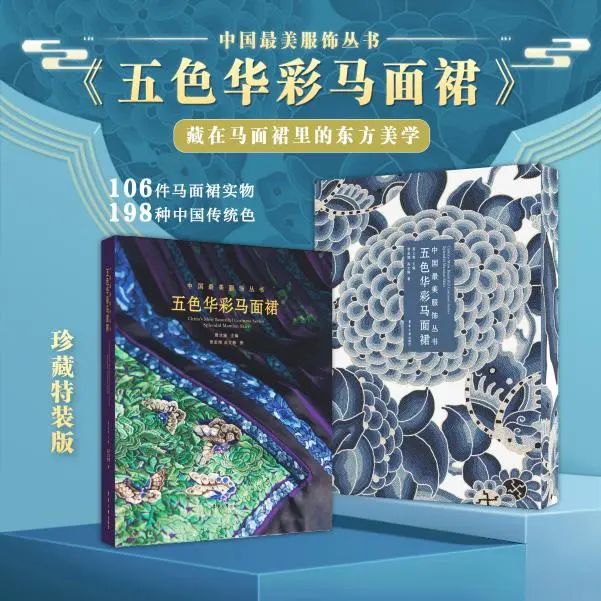
(Image of “China's Most Beautiful Costume: The Splendid Mamian Skirt”)
On May 17, Donghua University Press released the book “China's Most Beautiful Costume: The Splendid Mamian Skirt” in Shanghai.
This book explores the classic garment in depth, using literature, images, and physical artifacts to trace the origins and evolution of the Mamian skirt. As the first academic monograph on the Mamian skirt in China, it systematically studies traditional Chinese colors, categorizing 198 traditional shades and creating the first edition of the “Splendor in Chinese-style Colors” color card. The book also systematically catalogs types of Mamian skirts unearthed from various Ming Dynasty tombs, providing a detailed list of artifacts. It features 106 Mamian skirt items and 200 high-resolution images detailing pattern structures, vividly recreating the skirt’s exquisite beauty. “The Mamian skirt has recently become popular both domestically and internationally. It is a classic example of traditional Chinese clothing transitioning from historical contexts to contemporary fashion, migrating from museums and books into daily life and modern trends. Therefore, we chose the Mamian skirt as the subject of the first book in “China’s Most Beautiful Costume” series. Its publication represents our effort to promote and innovate the development of traditional Chinese culture,” said Chen Ke from Donghua University Press. Following this, “China’s Most Beautiful Costume” series will continue to delve into the aesthetics of traditional Chinese attire, focusing on specific garments and accessories such as Yunjian, Wanxiu, Beizi, and Ruqun, guiding readers to appreciate the Oriental beauty embedded in traditional Chinese clothing.

(Release of the book “China's Most Beautiful Costume: The Splendid Mamian Skirt”)
“The Mamian skirt is a classic and highly representative style in traditional Chinese clothing. It has a long history, distinctive appearance, exquisite craftsmanship, and practical functionality, embodying the integration of beauty and utility in Chinese clothing culture and the humanistic philosophy of conveying values through culture,” explained Jia Xizeng, the author of the book, a Donghua University alumnus, and a professor at the Academy of Arts & Design, Tsinghua University. “The term ‘Mamian’ here does not refer to a horse’s face but to the bastions, turrets, and bench-tables first mentioned in the “Defense against Attack with Ladders” and “Defense against Attack from an Elevation” chapters of Mozi. The term originated from these structures, which are narrow and long, resembling a horse’s face. They are T-shaped structures protruding from the city wall, allowing for an angled attack on enemies from three sides, eliminating blind spots below. The skirt panels of the Mamian skirt resemble the shape of these structures, hence the name Mamian skirt.”
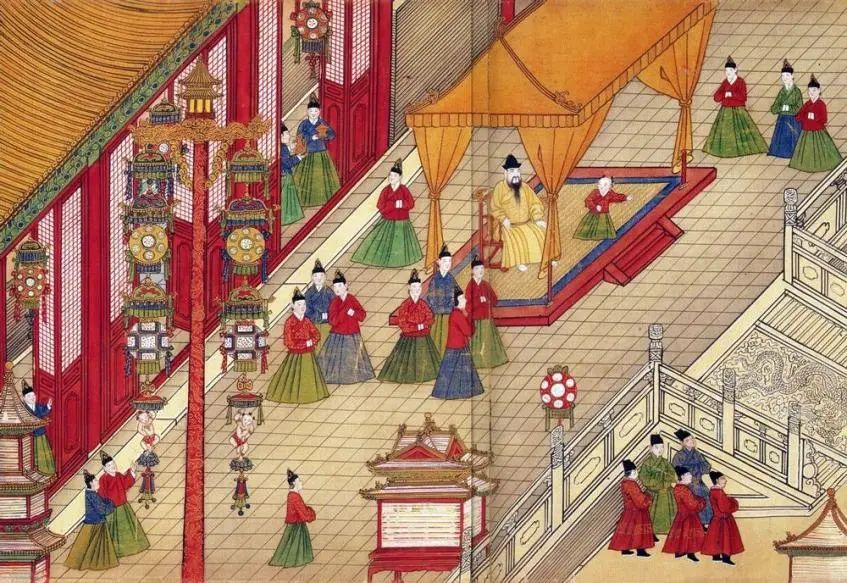
(The consorts wearing Mamian skirt in “Pleasure in Lantern Festival” by Emperor Xianzong of the Ming Dynasty)
Compared with similar works, “China's Most Beautiful Costume: The Splendid Mamian Skirt” is the first to study the Mamian skirt from the perspective of traditional Chinese colors. It analyzes and expresses the aesthetic features of over a hundred traditional colors displayed by the Mamian skirt. For example, the colors of this “Polychrome Brocade Skirt with Figures and Garden Patterns in Moonlight” are very rich, including pink, light blue, red, purple, pale blue, rose pink, dark blue, and yellow. The fabric is adorned with bright floral patterns, with floral motifs symbolizing the Eight Buddhist Treasures, which convey auspiciousness. Both sides of the skirt are edged with 30 strips of dark blue, which not only conceal the seams but also reinforce them. The simplicity of the edging’s color and luster contrasts sharply with the intricate brocade, creating a unique decorative element that appears especially gorgeous and splendid.

(Polychrome Brocade Skirt with Figures and Garden Patterns in Moonlight)
The brilliant colors of the Mamian skirt are not only reflected in the fabric and edging but also achieved through embroidery and patchwork techniques for decorative patterns. This “Red Brocade Phoenixtail Skirt with Embroidered Eight Immortals Pattern” features a red brocade base with hidden floral designs, decorated with dragon and phoenix motifs symbolizing auspiciousness and the Eight Immortals crossing the sea. The skirt is divided into eight panels on each side. The front and back Mamian sections share the same motifs, with dragons soaring through clouds embroidered in various colored threads. The dragon’s head and tail are embroidered with peacock feather threads. The Eight Immortals pattern appears on the colorful strips on both sides of the skirt, characterized by lively and interesting designs, meticulous embroidery, and rich color combinations.

(“Red Brocade Phoenixtail Skirt with Embroidered Eight Immortals Pattern”)
The charm of colors lies not only in their variety but also in the subtle nuances within the same color spectrum. For instance, the “Blue-on-Blue Cutwork Embroidered Mamian Panel with ‘Eight Immortals Crossing the Sea’ Motif” showcases this beautifully. “Blue-on-Blue Embroidery” is an embroidery technique influenced by blue-and-white porcelain, using threads of varying shades within the same blue color family. The primary motif is the hydrangea, historically known as the “Eight Immortals Flower”. The background features a branch of begonia, symbolizing the “Eight Immortals Crossing the Sea”.
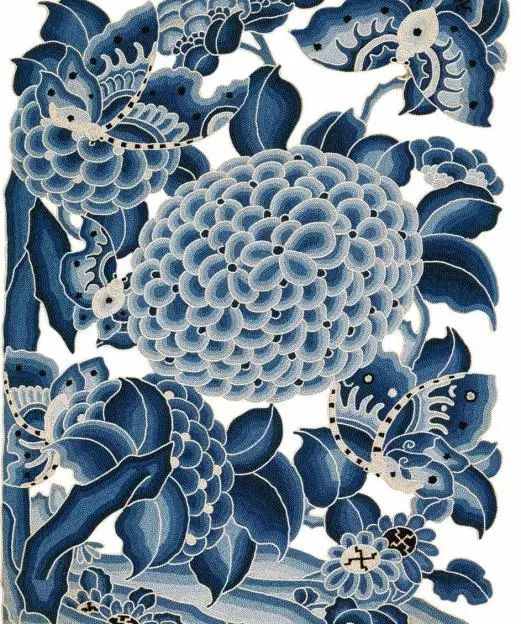
(“Blue-on-Blue Cutwork Embroidered Mamian Panel with ‘Eight Immortals Crossing the Sea’ Motif”)
Additionally, the book is empowered with AI capabilities. By scanning the QR code on the copyright page with a smartphone, readers can access complimentary lecture videos about the Mamian skirt provided by the publisher. Moreover, they can interact with the book’s AI knowledge assistant for Q&A, making this book a true pocket-sized encyclopedia on the Mamian skirt.
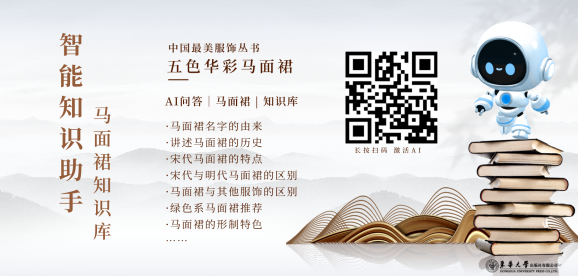
Bao Mingxin, a professor and doctoral instructor at the College of Fashion and Design at Donghua University, is one of the early scholars in China to conduct research related to the Mamian skirt, and is also Jia Xizeng’s instructor. He mentioned, “Ancient Chinese skirts were made from multiple tailored pieces of fabric. Some sections needed to be stitched together, while others overlapped without sewing. Certain areas required pleating or gathering, and the exposed parts were adorned with various decorations, such as jacquard, embroidery, printing, or gilding. The Mamian skirt encompasses all these features and is the result of the long-term development of ancient Chinese skirts. It rightfully deserves to be called ‘one of the most beautiful pieces of Chinese clothing’.” The “2024 Douyin E-commerce Women’s Consumption Trends Data Report” shows that in the past year, orders for neo-traditional Chinese clothing on the platform increased by 195% year-over-year, Hanfu orders grew by 336%, and Mamian skirt orders surged by 841%. Despite societal changes and evolving times, with significant shifts in lifestyles and dressing habits, the Mamian skirt has endured through the centuries, continuing to radiate with a unique charm. It is beloved not only by enthusiasts of traditional clothing and Hanfu but also by Western fashion brands and designers on the international stage. “The rich and profound heritage of traditional Chinese clothing culture, including the Mamian skirt, has inspired widespread admiration for traditional Chinese attire. The planning and publication of this book series bring museum artifacts to life, offering both collectible and academic value. It is sure to spark the ‘aesthetic gene’ within everyone’s bloodline, which is something to look forward to.”
At the same time, the exhibition of “Fashion for All Things: Reconstruction of Traditions – Splendid Mamian Skirt” was unveiled at the themed hall on 3F of the Shanghai Textile Museum from May 18 to July 18. The event was jointly organized by Shanghai Textile Museum, Tsinghua University Art Museum, Tsinghua's traditional Chinese costumes and color research department, and Donghua University Press.
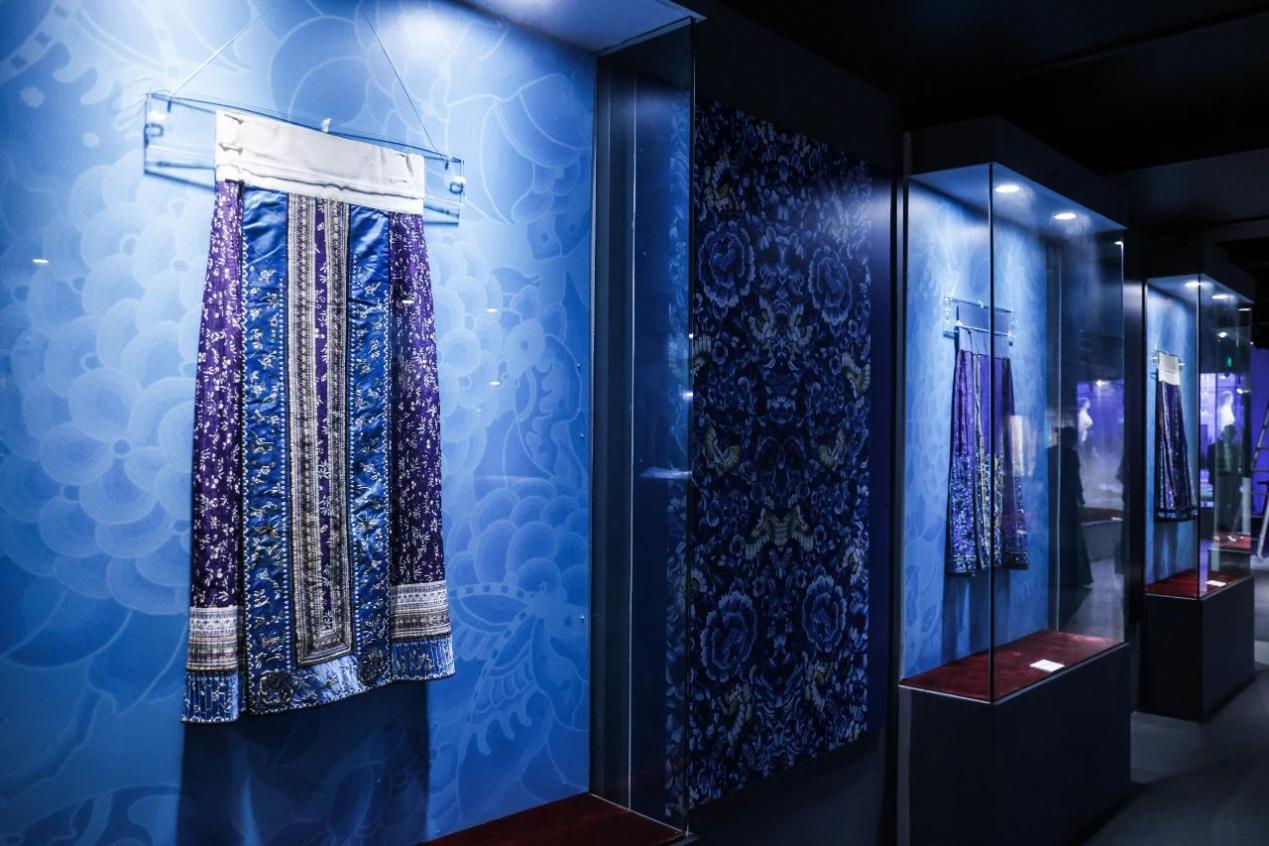
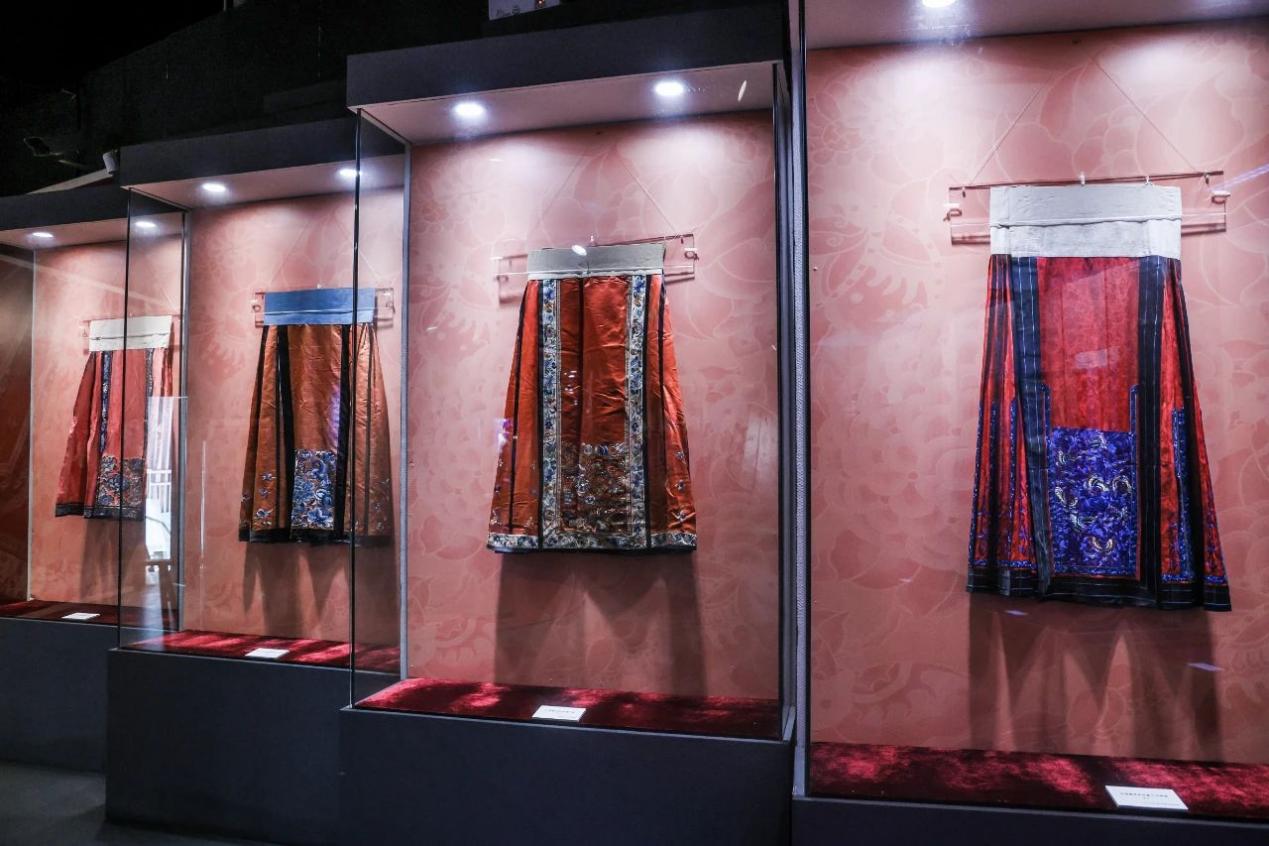
(Live scene of the exhibition)
“General History of Chinese Textile”, “Textiles from Dunhuang in the Dunhuang Academy”, “Shanghai Style”, “Research on Ancient Northern Chinese Ethnic Minority Clothing”, “Research on Tibetan Clothing” ... In recent years, Donghua University Press has actively explored and practiced the innovative transformation and development of China’s outstanding traditional culture. They have compiled and published groundbreaking, milestone works that contribute significantly to the research of Chinese textile and clothing culture. In the future, Donghua University Press will continue to enhance the dissemination and influence of Chinese civilization through high-quality publications. It will leverage the University’s strengths in textiles, materials, and design to further develop their unique focus on clothing culture. With new initiatives in cultural inheritance and innovation, it aims to nurture a new generation for the times and uphold the responsibilities and commitments of a university press.


